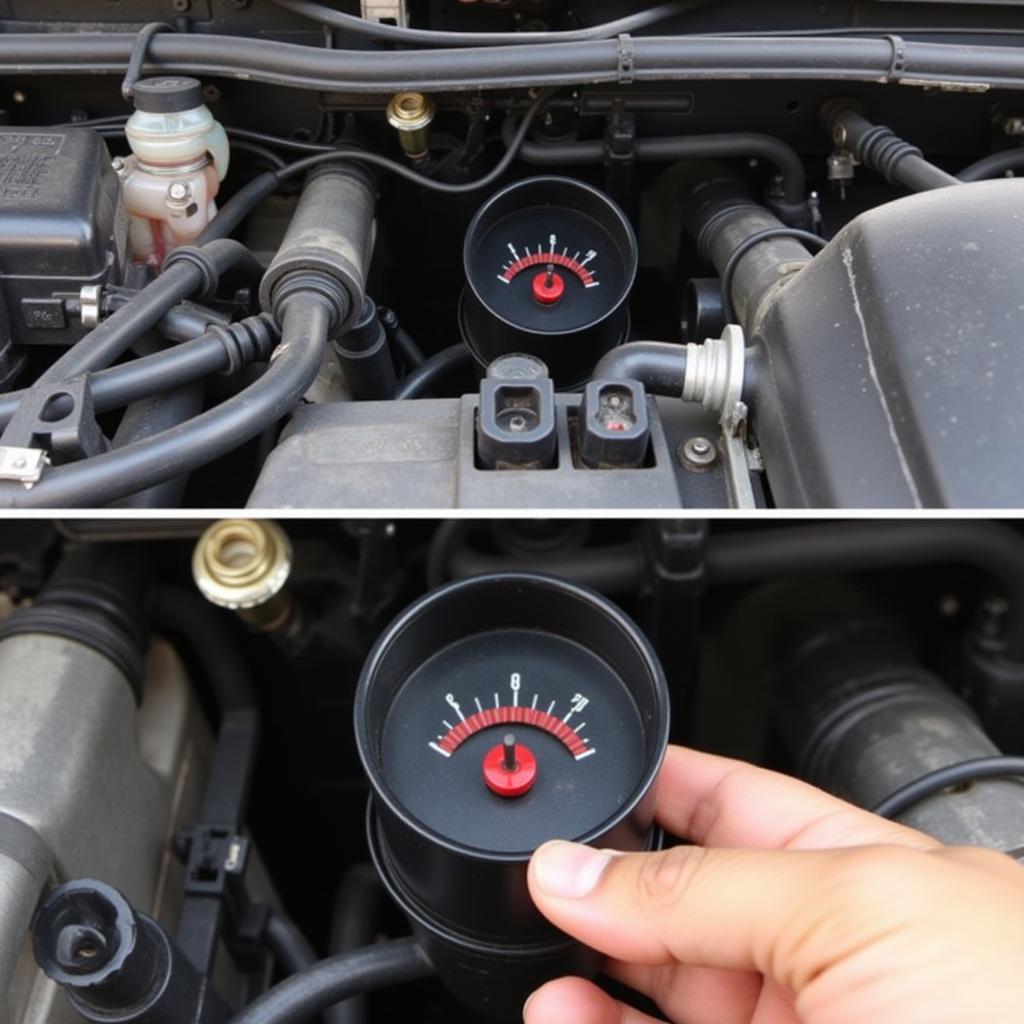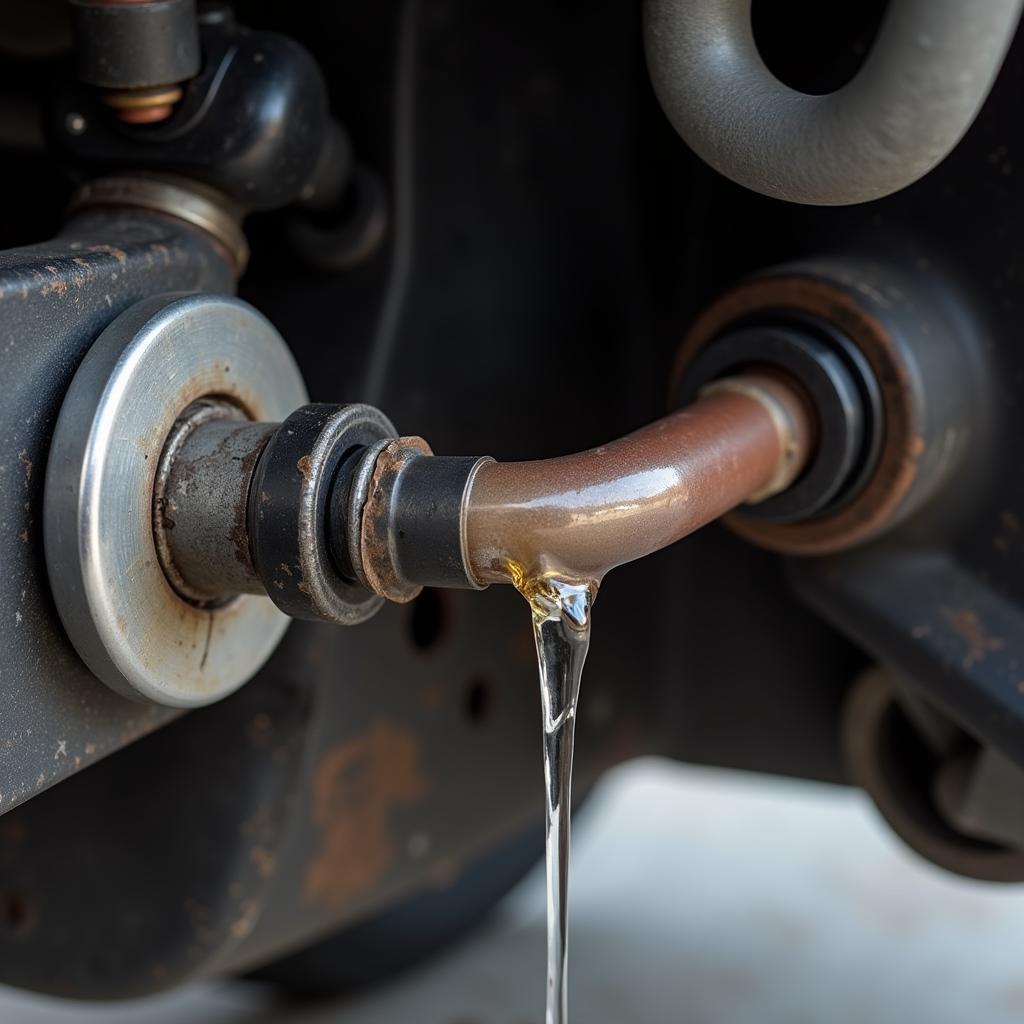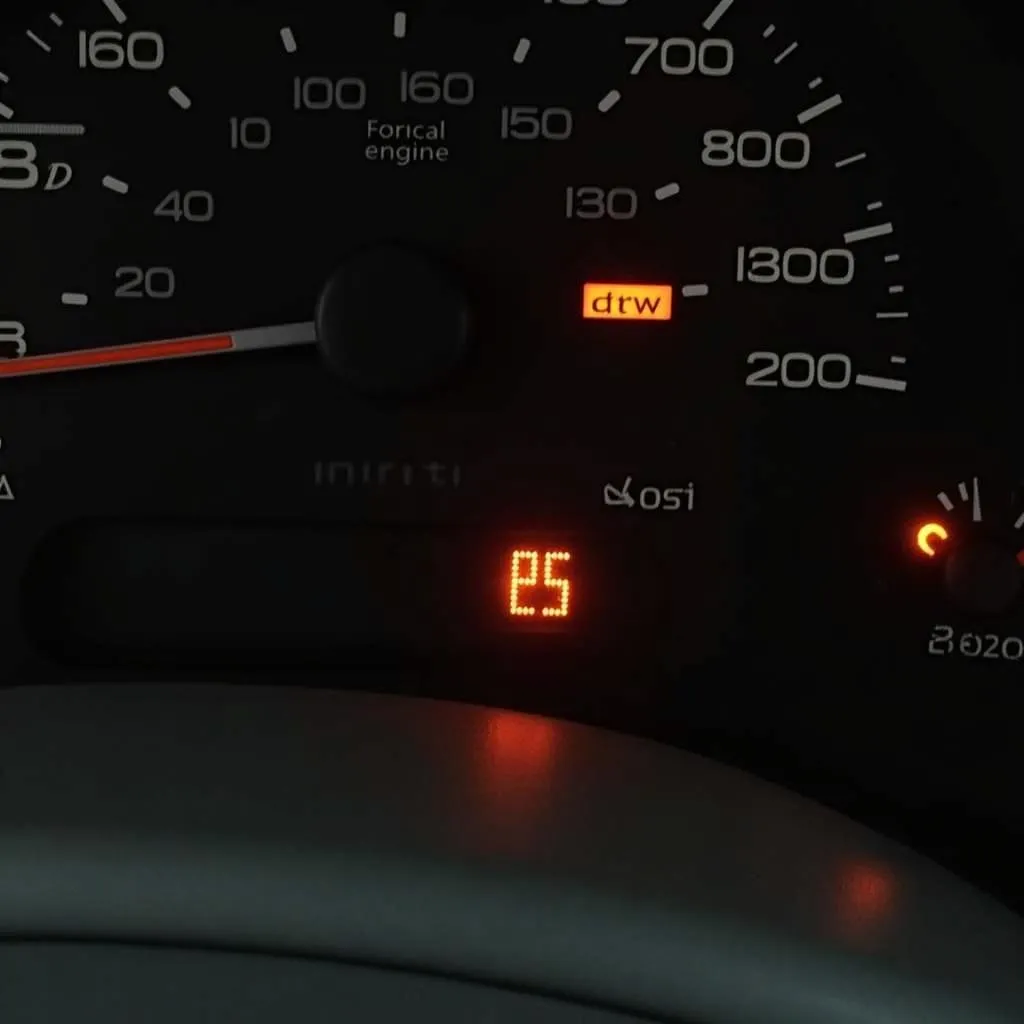The brake fluid warning light on your 2017 Kia Soul is a critical safety indicator. When it illuminates, it signals a potential problem within your braking system that requires immediate attention. This article will guide you through understanding the warning light, potential causes, and the steps to take to ensure your safety on the road.
Understanding Your Kia Soul’s Brake System
Before delving into the warning light, it’s helpful to understand the basics of your Kia Soul’s braking system. The system is hydraulic, meaning it uses brake fluid to transmit force when you press the brake pedal. This force is then used to activate the brake calipers, which press the brake pads against the rotors, effectively slowing down or stopping your vehicle.
Why is My Brake Fluid Light On?
The brake fluid warning light is directly connected to the brake fluid level sensor in your Kia Soul. When the light comes on, it typically indicates one of two things:
- Low Brake Fluid: This is the most common reason. Brake fluid levels naturally decrease over time as brake pads wear down. However, a sudden drop in fluid level could indicate a leak in the system.
- Faulty Brake Fluid Level Sensor: While less common, a malfunctioning sensor can also trigger the warning light.
What to Do When the Brake Fluid Light Comes On
Ignoring the brake fluid warning light can be dangerous. Here’s a step-by-step guide on what to do:
- Safely Pull Over: As soon as it’s safe, pull over to the side of the road and turn off your engine.
- Check the Brake Fluid Level: Locate the brake fluid reservoir under the hood (refer to your owner’s manual for the exact location). Carefully open the reservoir cap and check the fluid level. It should be between the “MIN” and “MAX” lines.
- Add Brake Fluid (If Necessary): If the fluid level is low, carefully add the correct type of brake fluid for your 2017 Kia Soul (DOT 3 or DOT 4, as specified in your owner’s manual). Never mix different types of brake fluid.
- Inspect for Leaks: If you had to add a significant amount of brake fluid, there might be a leak. Carefully examine the area around the brake fluid reservoir, brake lines, and near the wheels for any signs of fluid leaks.
- Seek Professional Help: If you notice a leak, the fluid level remains low after adding fluid, or the warning light stays on, it’s crucial to have your Kia Soul towed to a qualified mechanic or dealership for a thorough inspection and repair.
 Kia Soul Brake Fluid Reservoir
Kia Soul Brake Fluid Reservoir
Importance of Using the Correct Brake Fluid
Using the wrong type of brake fluid can damage your Kia Soul’s braking system. Refer to your owner’s manual or the cap of the brake fluid reservoir to determine the correct DOT specification for your vehicle.
“Using the incorrect brake fluid can lead to seal degradation, reduced braking performance, and expensive repairs,” says master mechanic John Smith. “Always stick to the manufacturer’s recommendations.”
Preventing Brake Fluid Issues
- Regular Brake Inspections: Include brake fluid checks during routine maintenance or oil changes.
- Address Leaks Promptly: Don’t ignore any signs of brake fluid leaks.
- Quality Brake Pads: Invest in high-quality brake pads that wear down evenly and produce less brake dust.
 Leaking Brake Line on a Kia Soul
Leaking Brake Line on a Kia Soul
FAQs
1. Can I drive my Kia Soul with the brake fluid light on?
It’s highly discouraged. Driving with low brake fluid or a leak can significantly compromise your braking ability, putting you and others at risk.
2. How often should I change my brake fluid?
Kia recommends replacing your brake fluid every two years or 24,000 miles, regardless of driving conditions.
3. Why is my brake pedal feeling spongy?
Air in the brake lines can cause a spongy brake pedal, often accompanied by the brake fluid warning light. This requires professional bleeding of the brake system.
4. How much does it cost to fix a brake fluid leak?
The cost can vary depending on the location and severity of the leak. Minor leaks might be inexpensive to fix, while major leaks requiring brake line replacements can be more costly.
5. Can I add brake fluid myself?
Yes, but it’s crucial to use the correct fluid type and avoid spills. If you’re unsure, it’s best to consult a mechanic.
Conclusion
The brake fluid warning light in your 2017 Kia Soul should never be ignored. Understanding its meaning and taking prompt action can help prevent potential brake failures and ensure your safety on the road. Remember, regular maintenance and addressing any brake-related issues promptly can go a long way in preventing costly repairs and, most importantly, keeping you safe behind the wheel.

